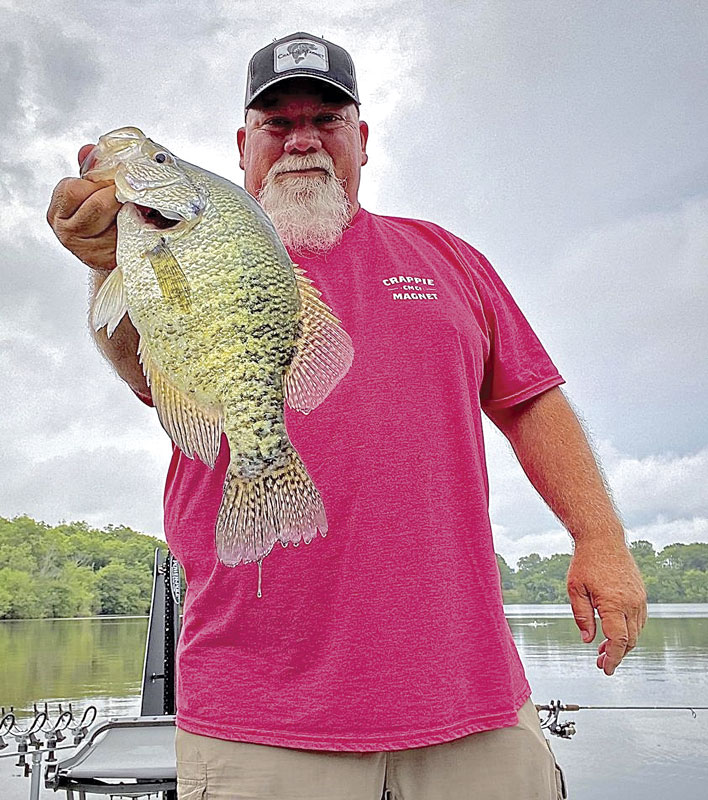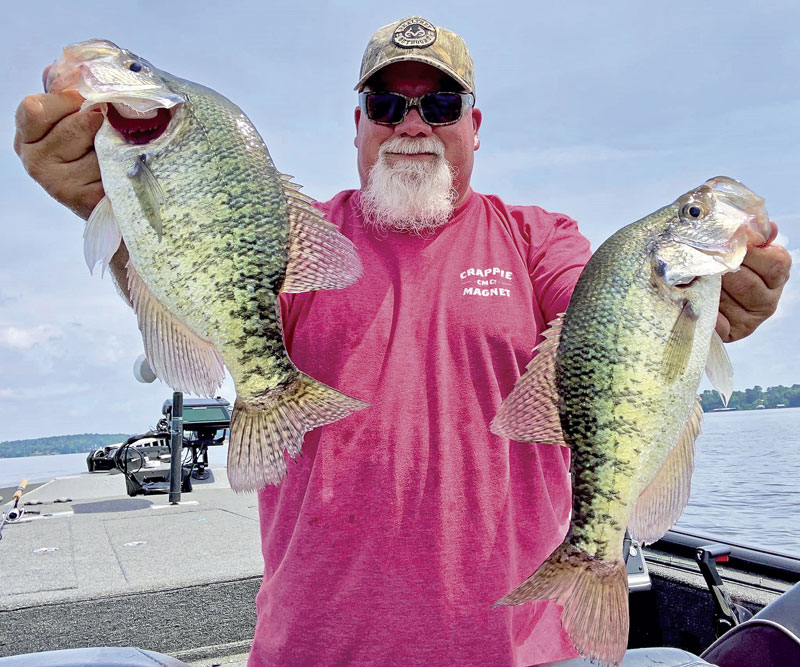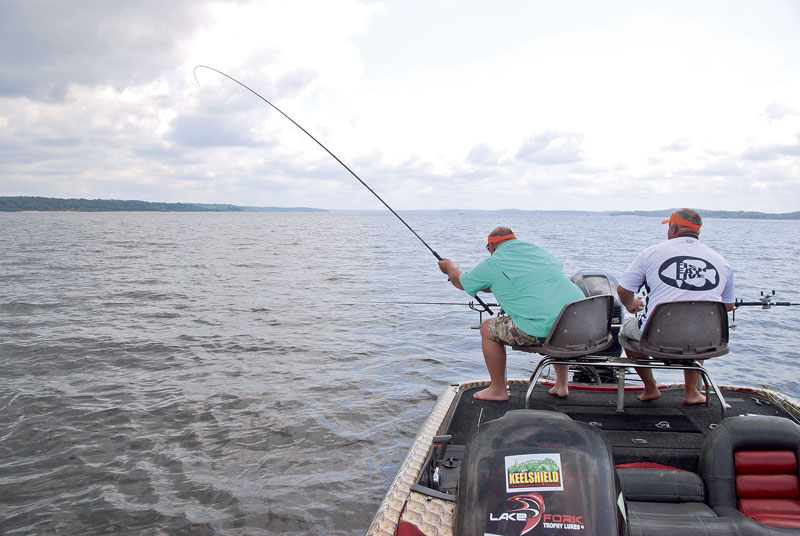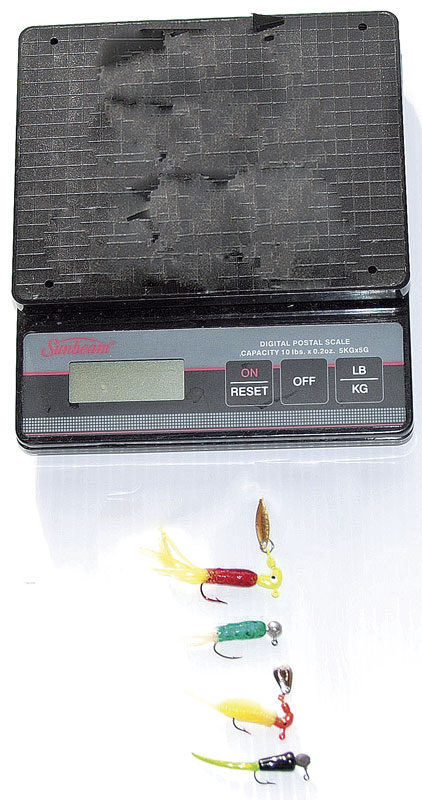
All references to the Walrus and ham sammiches aside, outdoors personality John Godwin knows his stuff when it comes to summer crappie fishing.
John Godwin might be more famous for his quips and advice from a duck blind in the television show Duck Dynasty,but put him in his boat on a good crappie lake somewhere in his home state of Louisiana or an oxbow on the other side of the river in Mississippi, and he’s just as happy.
One of Godwin’s favorite way to fish for crappie — if not his most-favorite — is long-line trolling. While many anglers share his passion for the technique, most will abandon long-lining during the summer once water temperatures heat up.
Godwin said that’s a mistake.
“I love long-lining,” he said. “To me, it’s the most-fun way of fishing for crappie, but it’s also really productive in the summer, too.”
Godwin described two types of bodies of water that hold the majority of crappie: reservoirs and oxbow lakes, especially the latter that are still tied to the Mississippi River.
White crappie: on the move
“On reservoirs in the summer, white crappie will roam around and chase bait,” he said. “If you want to catch a black crappie, you gotta troll across the tops of the brush piles, but white crappie stay more out in the open.”
Godwin theorized that by August, thermoclines have set up, holding baitfish higher in the water column. It’s not unusual, he said, to go out first thing in the morning or late in the evening and see schools of baitfish dimpling the surface. He said crappie will often suspend below the baitfish, and long-lining lets him put his baits between the baitfish and the crappie.
“The fish are shallow, so I’m not going to use anything heavier than a 1/16-ounce jighead, and a lot of times, I’ll even use a 1/32- ounce jighead,” Godwin said. “I like the Fin Spins for long-lining in the summer; that extra flash from the blade really helps the bite.”
Godwin sets up his Sea Ark boat with eight rods. On each side of the boat, he will start with the shortest rods toward the stern and the longest rods closer to the bow. He uses a 10-foot B’n’M Duck Commander trolling rod closest to the stern, followed by a 12-footer and a 14-footer after that.

“It seems like with the fish so shallow, you tend to push them out to the sides of the boat. That’s why I like the longer trolling rods,” said Godwin. “I even started using a 16-footer all the way up. It’s a B’n’M Prostaff trolling rod. It seems like those outer rods end up catching all the better fish.”
Godwin looks for places that are showing bait on the surface, but he also has some spots that he fishes because it seems like they always hold baitfish in the summer. He said there’s no real rhyme or reason to it, but he likes to know the bait is there or he won’t catch many crappie.
“It’s hard to see the bait on the graph; they’re so high up in the water,” he said. “The 1/32-ounce jigs will get down to about 3 feet when you pull them at one mile per hour, and the 1/16-ounce jigs will get to about 6 feet at one mile an hour. That’s using 6-pound test line.”
Godwin said his top pick of baits are Crappie Magnet’s Slab Curlies, and that his color choices are typically based on water clarity. His favorites in clear water are purple and chartreuse and a color called “sho nuff” that he describes as the “monkey milk” color with a chartreuse tail.
Godwin said river lakes are still high this year, and as they heat up, the shad will also come to the top.
“I don’t understand why,” he said. “They don’t form thermoclines like the reservoirs, but the bait will be right on the surface, so I fish those lakes the same way I do the reservoirs.”
Godwin generally targets flats that may be 14 feet deep on some lakes and deeper on others.

Development of long-lining
It’s hard to argue about when long-lining first came into existence. Fishermen have been trolling hooks behind their boats for ages. Long-line trolling probably came about with the advent of long rods to space out offerings and give crappie a variety of baits in the wake of the boat.
When long-lining for crappie became popular, Godwin fell in love with the tactic and points to it as his go-to tactic any time crappie are suspended and chasing baitfish.
“Long-lining works best when fish are holding near the surface,” Godwin said. “Long-lining also works better when crappie are relating to roving schools of baitfish than when specifically relating to structure.”
Like slow, vertical trolling, aka tight-lining, long-liners may follow a contour line but most likely would be trolling the expanse of a flat. This allows an angler to cover more water as the normal boat speed is twice that of tight-lining.
“Crappie will follow a contour line, like a creek channel, and that’s a great place to look for them, but active, feeding fish are often all over a flat chasing baitfish. That’s the best situation to find crappie when you’re long-lining,” Godwin said.

Trolling variables
For those not familiar with long-lining, the depth a bait is presented is a function of boat speed, the amount of line out, the weight of the jighead and line diameter. Each factor plays a part in how deep jigs will swim and whether you reach the level at which crappie are suspended.
Taking a page from Long-Lining 101, a good rule of thumb is to suggest trolling a 1/16-ounce jighead on 6-pound line the distance of an average cast — 40 to 50 feet — behind the boat. The remaining variable then becomes boat speed. Speeding up will bring the bait up in the water, and slowing down or momentarily stopping the boat will cause the jigs to fall.
Similar results can be achieved by making sharp turns when trolling instead of just running straight lines back and forth across a stretch of water.

“To be good at depth control means you spend a lot of time pulling jigs,” Godwin said. “It’s also gonna work different on my boat than it does on someone else’s boat, so you need to figure out what works best on your boat.”
His advice was to find a 10-foot deep flat with a level bottom and experiment with different variables to find what combination will put you occasionally skimming bottom, then work from there on getting your boat dialed in for the line you use, the rod holder setup you have, and the various jigheads and baits you pull.
Godwin admits there might be one thing he likes better than long-lining for summer crappie.
“I like eatin’ em,” he said, grinning.
Weighing in

Crappie anglers are familiar with using jigs that weigh considerably less than typical bass jigs. Popular jig weights for crappie include 1/32-, 1/16-, and 1/8-ounce, but those weights can vary considerably from one manufacturer to another, sometimes even one jig to another.
“I’ve seen jigs marked 1/16-ounce that weighed anywhere from 1.5 grams to 2.1 grams,” said tournament angler Kent Driscoll. “That’s why I also ways carry a gram-scale with me and measure each jig individually before I put it in the rotation.”
Driscoll said what may seem to be a negligible difference in weight can make a lot of difference in the depth that jig will swim when it’s pulled behind the boat. Add to that the weight and buoyancy of the jig’s body, and most anglers have no real clue what depth they’re fishing.
“The best water for long-line trolling is going to be stained, which means reduced visibility,” he said. “A crappie may only be able to see the bait at a distance of about 2 feet. Another factor — and any good angler knows — is a crappie always feeds in an upward position and will completely ignore a bait that passes just 6 inches under its nose.”
Using a gram scale, which can be found at most hardware stores that sell precision tools and equipment for around $15, instead of having only three or four choices of jig weights, he can broaden that range to around a dozen. The subtle weight difference allows him to hone his swimming depths to get around a foot of depth tolerance, which can and has made a huge difference in the number of bites he gets.
The post “Long-lining with the Duck Dynasty’s crappie wizard“ first appeared on MS-Sportsman.com.


